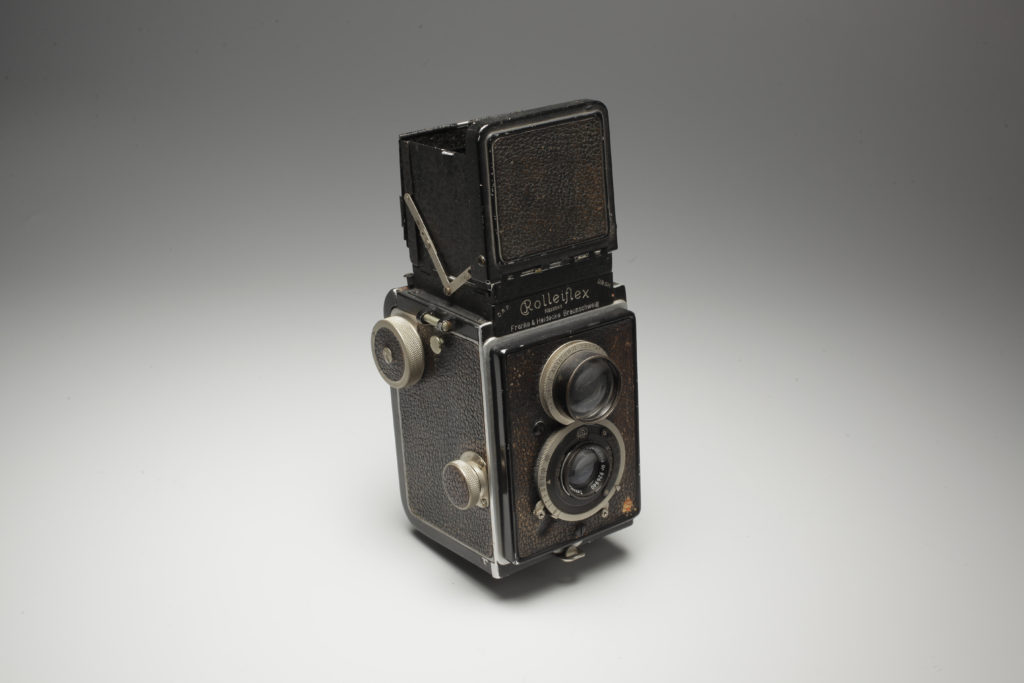Rolleiflex
Released in 1929 by German company Franke & Heidecke, the Rolleiflex quickly became the reporting tool of choice for those who did not wish to switch to the smaller format.
This camera had 2 lenses, one for viewing and one for framing. The image was reflected by a mirror onto a ground glass found on the top of the camera. This system, which made clear viewing possible, had already been known for about 50 years at the time. Franke & Heidecke were the first to apply this device to a camera using film.
This camera, made entirely out of metal, was very popular amongst reporters, who liked the way it operated silently and the continuity of the viewing, while the photograph was taken, thanks to the 2-lens system, as well as its robustness. The viewing glass on the top of the camera was also an encouragement to take photographs from other points of view, rather than always at eye level. Lastly, Rolleiflex’s 6x6cm image format gave enlargements better definition than the 24×36 mm format.
The Rolleiflex, the Leica and the Speed Graphic thus became the three main cameras used by photojournalists, with each camera offering different possibilities, not only in terms of working methods, but also in terms of results.


